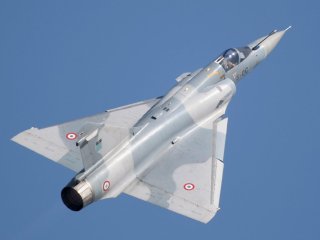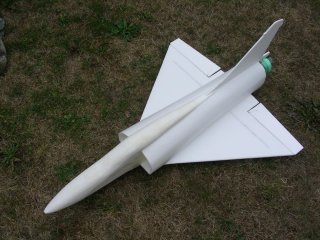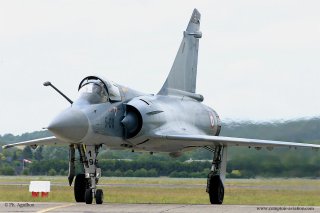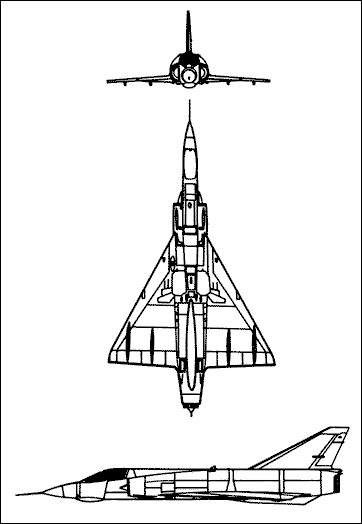Mirage 2000.
 |

|
|
The Mirage
2000 is a sleek delta-wing jet fighter built by Dassault Aviation,
and used by the French Air Force since the early 1980's. The real
plane has a 9.13 meter wingspan, for 9,500 Kg take-off weight (in fighter
configuration), and a maximum speed of Mach 2.35 (2,500 Km/h).
Like most Dassault airplane, this one is very sleek and nice looking. Rumor has it that Marcel Dassault was fond of saying that an aiplane could not fly well unless it was beautiful.
|  |
|
 The prototype of the Mirage 2000 displayed at the Musee de l'Air et de l'Espace in Le Bourget, near Paris (click on the photo for more pictures taken at the museum). |
|
The EDF nozzle section is cut from a plastic bottle of sparkling
water (1 liter Badoit
water). The plastic of those bottles is rather thick (to hold the
pressure), and the design of the bottle has the perfect tapered shape
to hold a ducted fan (see picture). The ducted fan is held in the
bottle section with double-sided tape. The bottle section is bolted on
to two long pieces of plywood. The pieces of plywood are glued to
the inner surface of the flanks of the fuselage (the 6mm Depron
flanks mentioned above).
flight: This plane flies very well. The flight is rather gentle, due to the rather low wing loading, and the rather small motor. Nevertheless, the maximum climbing angle is quite steep. The only problem is that the motor gets very hot when the plane is flown at full throttle for long periods. Hence, I will replace the motor by a more potent one. The fun thing about delta wing planes like this one is the incredible rolling rate. There are a couple fast and slow rolls in one of the videos.
|

|
Videos
These are AVI files compressed with the DivX codec. Windows users may have to download the DivX codec. Linux users can watch this with mplayer (using the lavc codec).
 |
First flight of the Mirage | [AVI MPEG4/DivX] (14.5MB) |
 |
Second flight of the Mirage | [AVI MPEG4/DivX] (33.0MB) |
 |
 Click on the image for a VRML 3D model of the Mirage 2000: |






 .
.